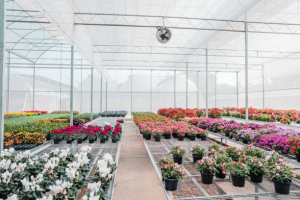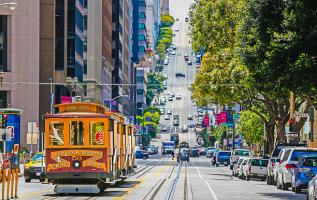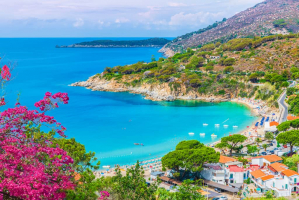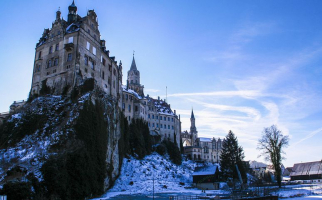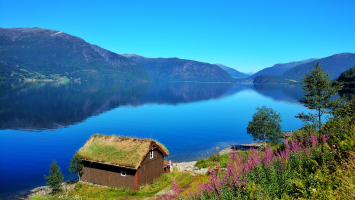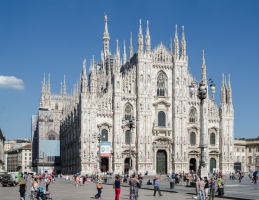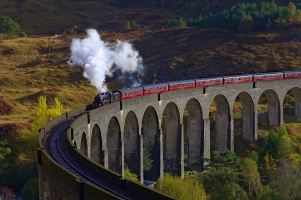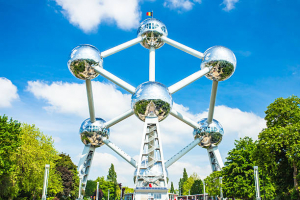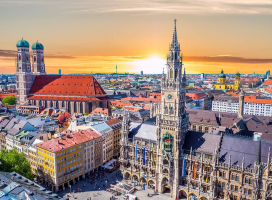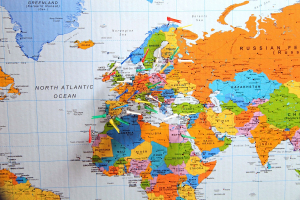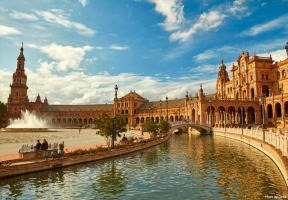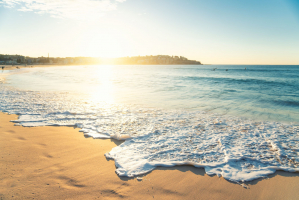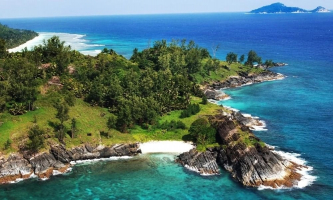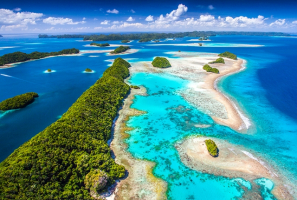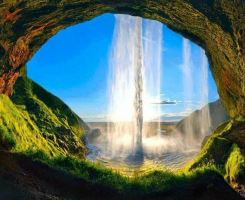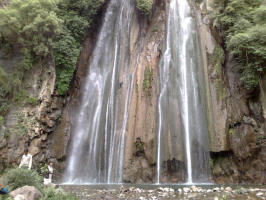Top 8 Most Beautiful Fountains in Europe
Europe is home to many amazing and stunning landmarks. There is a landmark or garden to view around every corner. A majestic fountain is one of the most ... read more...fascinating and astonishing sights. Europe has beautiful, magnificent fountains that are musical. These are the most incredible fountains worth visiting in Europe, from Paris to Budapest, whether they are in the city proper or on an island.
-
Known worldwide, the Trevi Fountain is a magnificent example of Baroque sculpture. Despite the 18th-century construction of the fountain, water has long been associated with the location. One of the most significant water sources in the old city was the Aqua Virgo, which was built in 19 BC. The aqueduct's deterioration, caused by Gothic invaders in the sixth century, paralleled the city's own decline.
Restoring the city’s ancient water sources heralded Rome’s resurgence in the Renaissance, and Leon Battista Alberti helped renovate the Aqua Virgo aqueduct in 1453. After failed initiatives involving notable painters like Gianlorenzo Bernini and Pietro da Cortona, Pope Clement XII finally commissioned Roman architect Nicola Salvi to design a suitable Baroque monument to honor the now-rechristened Acqua Vergine in the 1730s.
Salvi created a masterful plan that combined the towering classical façade of the Palazzo Poli behind with the new organic shape of the enormous fountain, a mountain of porous Travertine stone that is fully 86 feet high and 160 feet broad. The sea-titan Oceanus leads the flow of the pouring waters as seahorses and tritons play all around him in Salvi's epic masterpiece of ancient mythology. Meanwhile, artificial rocks crash down from the palazzo and into the square below.
Location: Piazza di Trevi, 00187 Roma RM, Italy
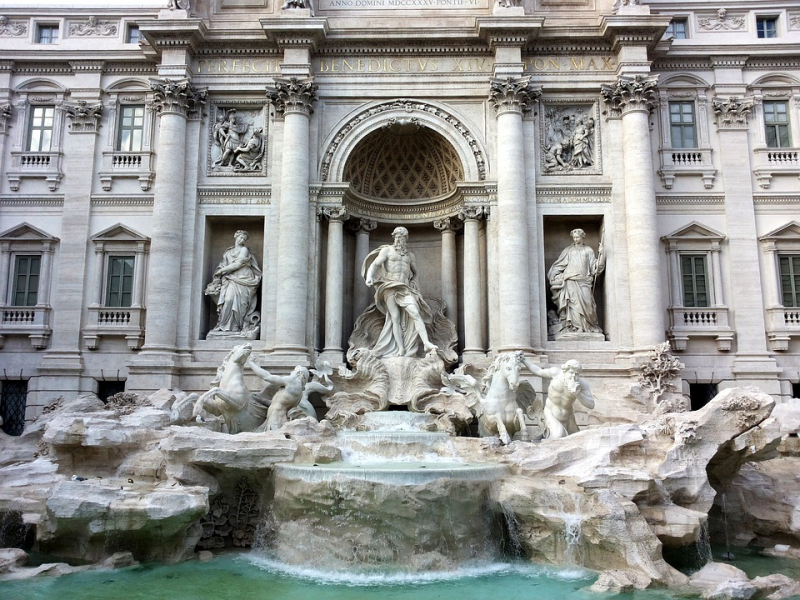
Photo by kittyvanrooij216 on Pixabay 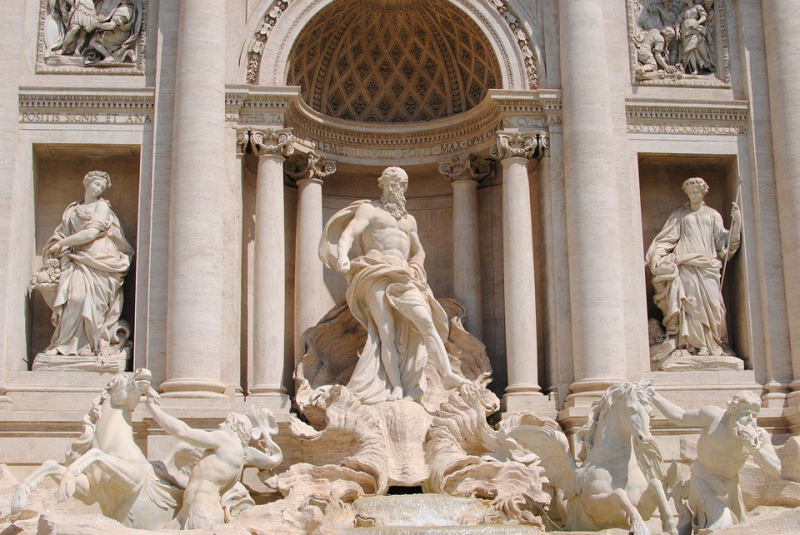
Photo by vlad_ropotica on Pixabay -
Piazza Navona is unmatched anywhere else in the world for its remarkable beauty. The work of the twin geniuses of the Italian Baroque dominates the square, which was formerly an ancient racecourse but has been turned into a dramatic piece of street theater. Francesco Borromini produced the colorful chapel of Sant'Agnese in Agone, while his competitor Gianlorenzo Bernini designed the magnificent Fountain of the Four Rivers. Bernini's jaw-dropping fountain, commissioned by the Pamphilj Pope Innocent IX as part of the family's effort to turn the plaza into an epic monument to themselves, is arguably the pinnacle of Baroque architecture.
Personifications of the four major world rivers—the Nile, the Ganges, the Danube, and the River Plate—that were well-known in the 16th century sit atop rocky outcroppings beneath a massive ancient Egyptian obelisk. The personification of the Nile is possibly the most intriguing of the four fascinating statues, while each of the four rivers is unique in and of itself. The Nile hides his face behind a veil, according to some, either because of fear that Borromini's church may collapse on him and crush him or out of admiration for the genius of the builder. More likely, it was because the origin of the Nile, a long-lasting geographical mystery that was memorialized in stone, was unknown.
Location: Piazza Navona, 00186 Roma RM, Italy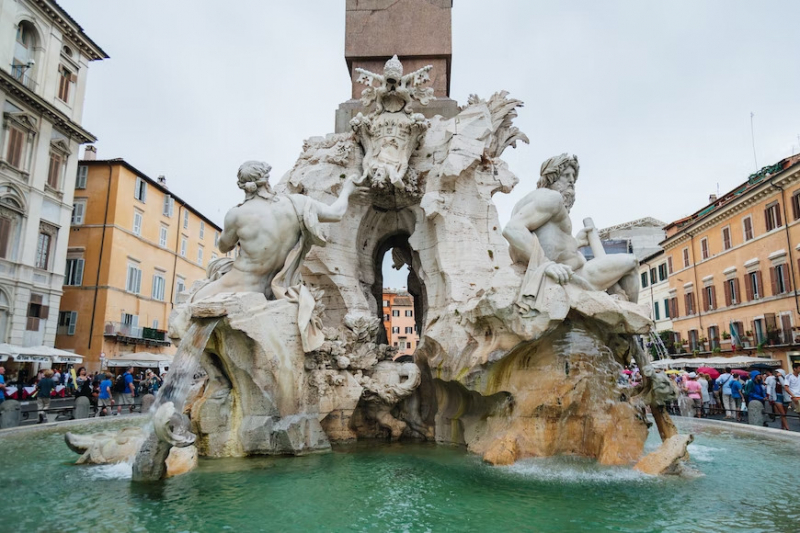
Photo by Nick Night on Unsplash 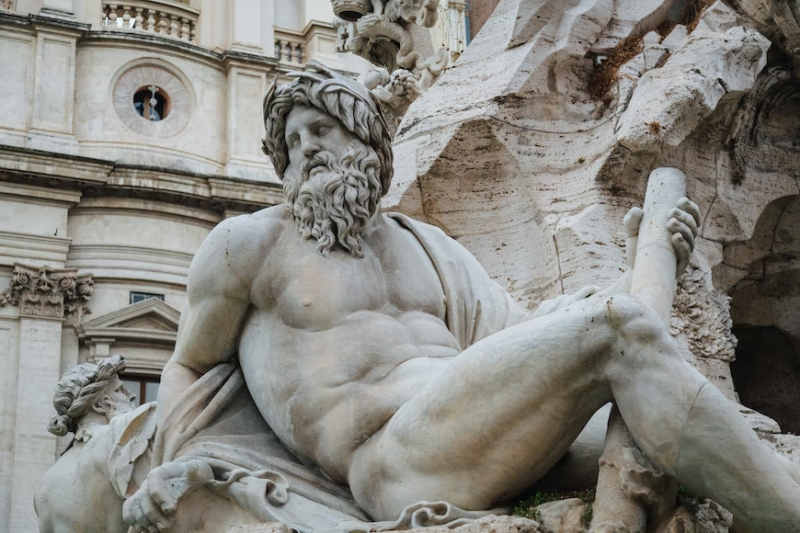
Photo by Nick Night on Unsplash -
The Jet d'Eau is a landmark fountain in the city of Geneva, Switzerland. It is located in the harbor of Lake Geneva and shoots water up to 140 meters (460 feet) in the air. The fountain is visible from many parts of the city and has become one of the most recognizable symbols of Geneva.
Originally, the Jet d'Eau was a safety valve for a hydraulic power network, but it soon became a popular tourist attraction. The fountain was first installed in 1886 and was much smaller than it is today, reaching a height of only 30 meters. Over the years, it has been moved and rebuilt several times, and its current form was built in 1951.
The Jet d'Eau is a spectacular sight, especially when it is illuminated at night. It operates year-round, but its hours of operation vary depending on the season. Visitors can get close to the fountain on the pier or take a boat tour of Lake Geneva to see it from a different perspective. It is a must-see attraction for anyone visiting Geneva, and it has become a symbol of the city's beauty and grandeur.
Location: Quai Gustave-Ador, 1207 Geneva, Switzerland
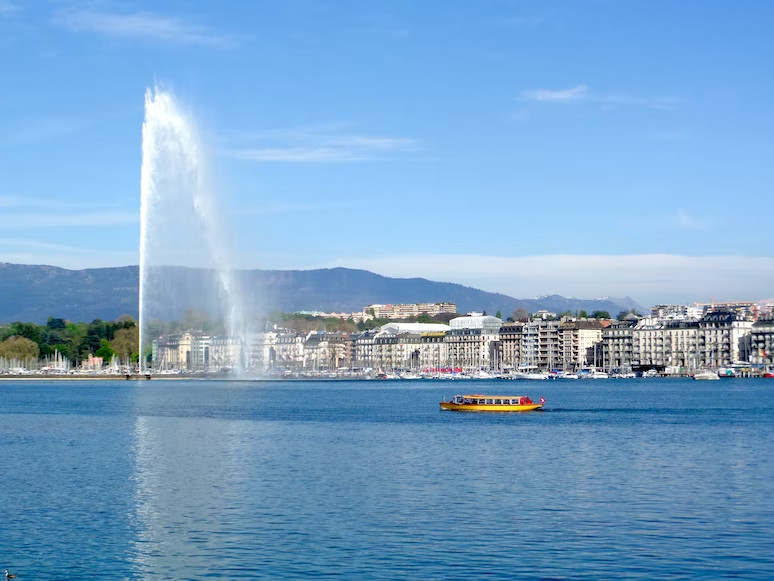
Photo by Toni Pomar on Unsplash 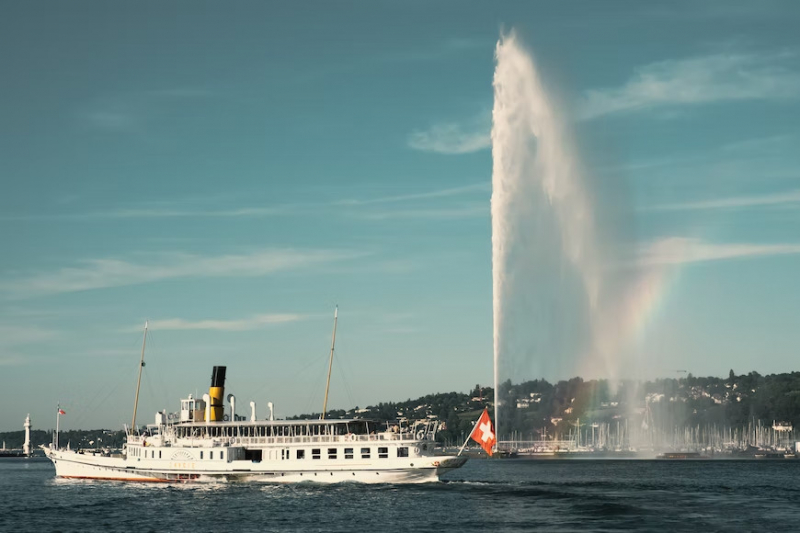
Photo by Yomira Studio on Unsplash -
The Peterhof Grand Cascade is an impressive fountain complex located on the grounds of the Peterhof Palace in St. Petersburg, Russia. It was commissioned by Peter the Great in the early 18th century and is one of the largest fountain complexes in the world.
The Grand Cascade consists of 64 fountains and 255 bronze statues, which depict mythological figures and characters from Russian folklore. The central feature of the complex is the Samson Fountain, which depicts the biblical hero Samson tearing apart a lion's jaws. Water shoots out of the lion's mouth and is directed toward the Grand Canal, creating a dramatic and unforgettable sight.
The Grand Cascade is designed to be viewed from the upper terrace of the palace, which provides a stunning view of the fountains and the surrounding gardens. The water flows through a series of basins and channels, creating a symphony of sound and movement that is breathtaking to behold.
The fountain complex is a testament to the grandeur and opulence of the Russian Imperial Court, and it has become one of the most popular tourist attractions in St. Petersburg. The Peterhof Grand Cascade is a true masterpiece of art and engineering, and it is a must-see for anyone visiting St. Petersburg.
Location: Pravlenskaya Ulitsa, Sankt-Peterburg, Russia, 198510
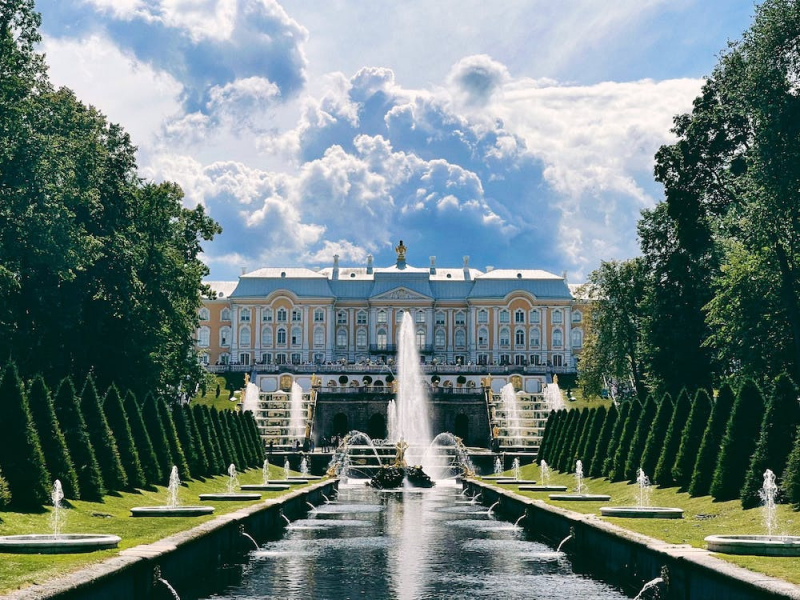
Photo by Denis Nazvantsev on Pexels 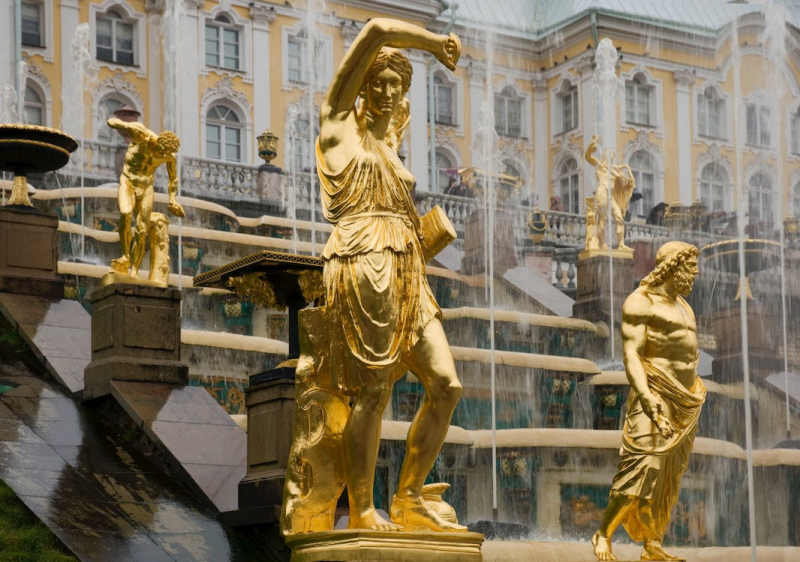
Photo by Tom D'Arby on Pexels -
The Font Magica, located at the base of Montjuc, was constructed for the Barcelona World Exposition. The engineer Carles Buigas created the Magic Fountain of Barcelona for the 1929 Universal Exhibition. The designer Carles Buigas submitted his plans one year before the exhibition and many thought that the project was too ambitious to be created, let alone completed on time. It was refurbished in 1992 for the Olympic Games and has remained a well-liked attraction ever since.
The fountain's most stunning features are made much more stunning at the night by music and light displays. Every second, about 2,000 gallons of water are forced through the nozzles. As the name implies, the experience is magical. This enormous fountain performs a magnificent display of music and is illuminated by every hue of the rainbow. It bubbles, bursts, spews, and spouts cascades of water. Every evening in the summer, thousands of people assemble to take in the show, sitting on the numerous steps that go up to the MNAC museum and taking in the sunset from the top of Montjuic mountain, beneath which the Magic Fountain is located.
Location: Pl. de Carles Buïgas, 1, 08038 Barcelona, Spain
Time taking place:
- From June to September: from Wednesday to Sunday
- From October to May: Thursday to Saturday
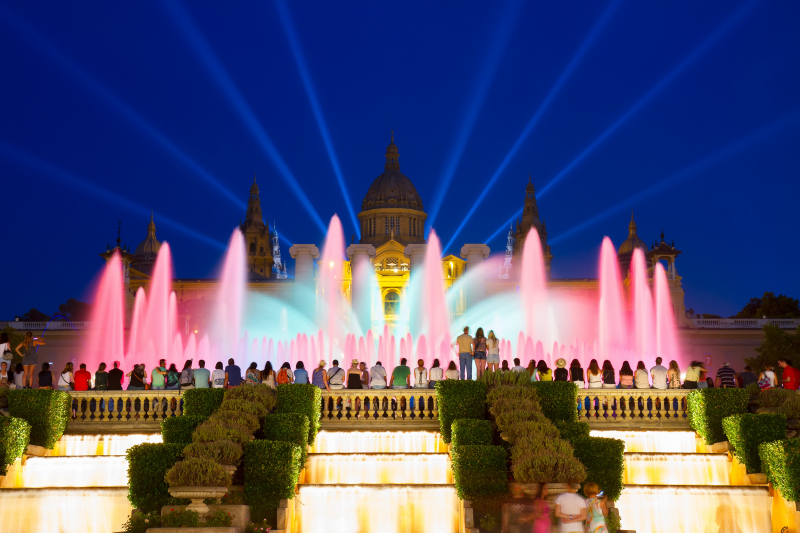
ArrivalGuides.com 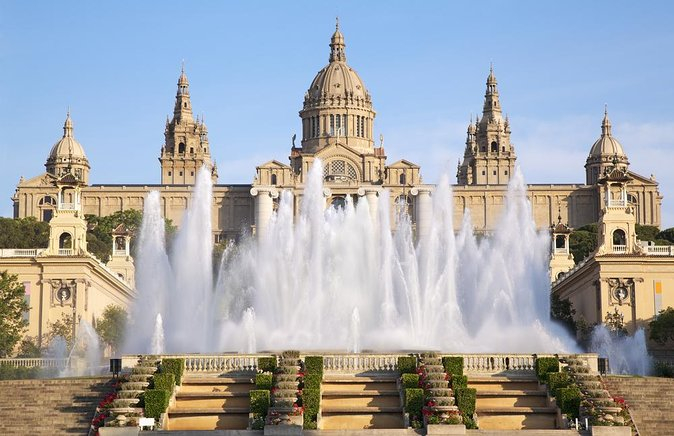
Viator -
As part of the city's ongoing effort to increase the number of cultural and tourism attractions, this tourist attraction launched in May 2011 and has received broad praise and acceptance. The "Multimedia Fountain Park" is a visual treat that combines music, light, and, as the name suggests, fountains. It is situated in the Podzamcze neighborhood just a short stroll north of the Old Town.
The fountain, which was constructed on the site of an abandoned concrete pond and cost over 11 million PLN to build, is a key component of a strategy to revitalize this Warsaw neighborhood by drawing tourists from the adjacent tourist route. The stunning visual show is provided by the fountain's synchronization with 295 colored LED RGB lights and a laser projector capable of creating visual effects like Warsaw's iconic Syrena (Mermaid) moving through the water. The fountain has 367 nozzles and is equipped with the ability to shoot 800 cubic meters of water 25 meters into the air over the rebuilt, 3,000-square-meter pond.
Location: Skwer 1 Dywizji Pancernej WP, 00-221 Warszawa, Poland
Time taking place: Fri & Sat only at:- 21:30 from May to July
- 21:00 in August
- 20:30 in September.
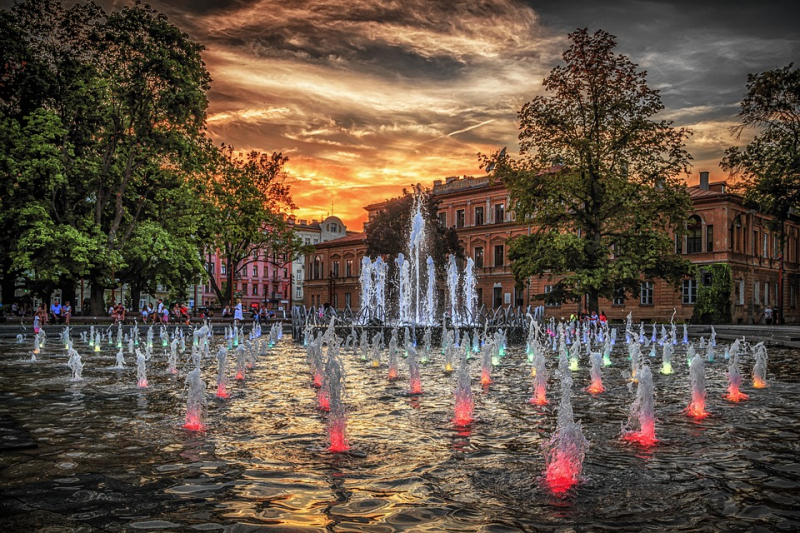
Photo by Arcaion on Pixabay 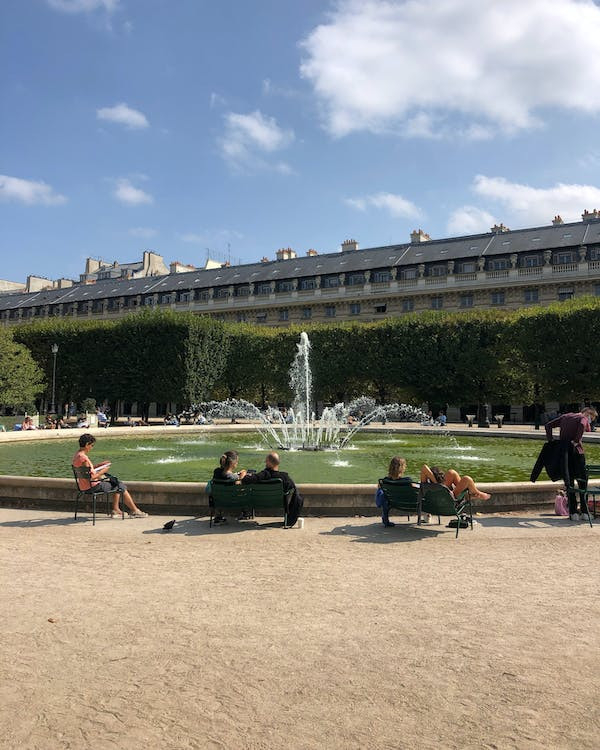
Photo by Nicolas on Pixabay -
Sir Charles Barry, R.A., the architect of the British Houses of Parliament, created a pair of fountains, one of which is now located in Wascana Centre. From 1845 to 1939, these fountains operated in London's Trafalgar Square before being moved to make room for bigger fountains.
The National Art Collection Fund of Britain was alerted to these fountains and purchased them in order to gift them to a Dominion Capital. The gift was accepted by Canada, and one of the fountains is dedicated to Lieutenant Colonel John By, who founded Bytown before it was renamed Ottawa.
The fountain is composed of red granite from Aberdeen, Scotland, and stands 10 feet tall. It has two bowls, the bottom of which has a diameter of 10 feet and the upper of which has a diameter of 5 feet. It is located inside a 34-foot-diameter concrete swimming pool. Stone from Tyndale is used for both the exterior wall and the pool coping. The mermaid statues do not have the traditional single tail, but instead have long and powerful tails as an extension of each thigh. Sitting on the edge of its fountains is one of the best ways to observe the hustle and bustle of the metropolis.
Location: Trafalgar Square, in London, England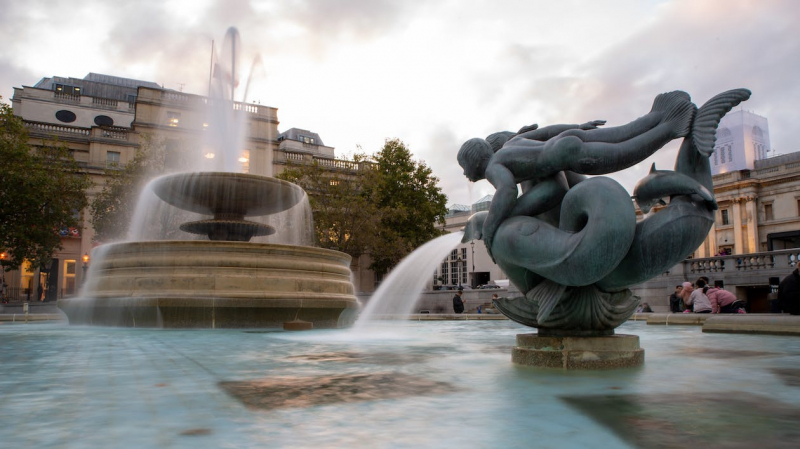
Photo by Mr Alex on Pexels 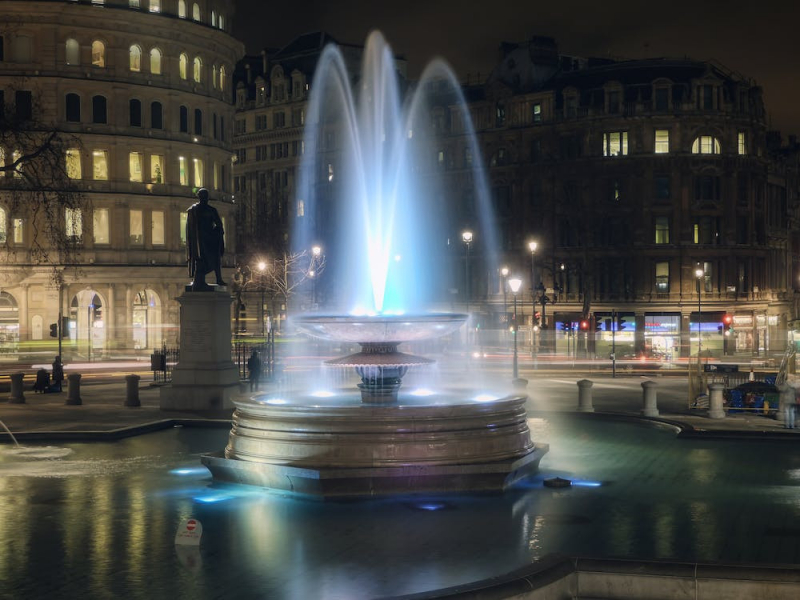
Photo by Mathew Browne on Pexels -
The Neptune Fountain, or Neptunbrunnen in German, is a beautiful fountain located in the historic center of Berlin, Germany. The fountain is dedicated to Neptune, the Roman god of the sea, and it was designed by Reinhold Begas in 1891. It was built to mark the completion of the new aqueduct that brought fresh water to Berlin from the Schöneberg Hills.
The fountain is made of bronze and features a large statue of Neptune, who is depicted riding a shell-shaped chariot pulled by sea horses. The statue is surrounded by other mythological figures, including mermaids, mermen, and tritons, who are all associated with the sea. The water in the fountain cascades from the mouths of the sea creatures, creating a beautiful and serene atmosphere.
The Neptune Fountain is located in the heart of Berlin's historic Mitte district, on the famous boulevard Unter den Linden. It is a popular tourist attraction and a favorite spot for locals to relax and enjoy the city's beautiful scenery. The fountain was heavily damaged during World War II, but it was restored in the 1960s and remains one of Berlin's most beautiful landmarks.
Location: Karl-Liebknecht-Str., 10178 Berlin, Germany
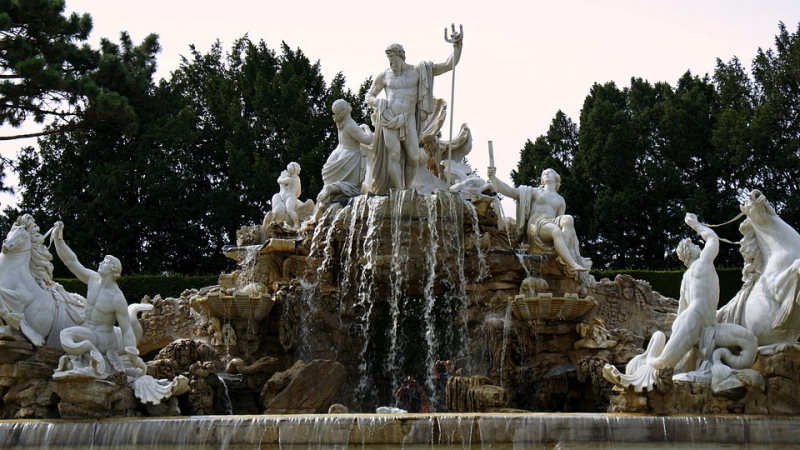
Photo by suju-foto on Pixabay 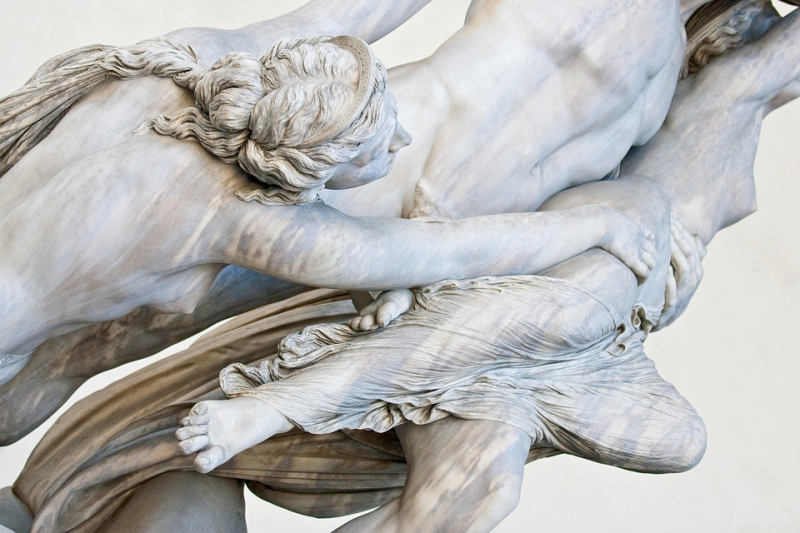
Photo by kasabubu on Pixabay










